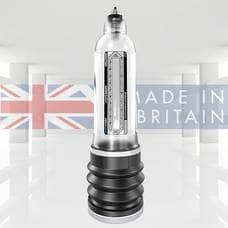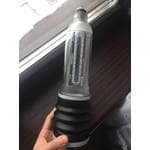COMMENTS, REVIEWS, FORUM
The content of the article
- What else, besides the kidneys, can pain be associated with??
- What diseases hurt the kidneys?
- Symptoms of Kidney Disease
- How does the left kidney hurt?
- Pain in right kidney
- Glomerulonephritis
- Pyelonephritis
- Types of pain in kidney disease
- Pain for the first time: a strategy of behavior
- Treatment of a diseased kidney
- Permanent form in renal failure
- Outcome
Content:
Kidney disease is a very common pathology that occurs in almost every second person worldwide. The kidneys are a paired organ, so both kidneys are affected in the disease. All kidney diseases are associated with pathological changes in the organs of the genitourinary system.

The most common kidney diseases are pyelonephritis, glomerulonephritis, urolithiasis and kidney failure. In diseases, the excretory function of the kidneys is disturbed and its quantity and composition change. Together with the urine, the substances necessary for the body are excreted, and all the harmful ones remain and cause an inflammatory process.
What else, besides the kidneys, can pain be associated with??
Sometimes pain is not associated with kidney pathology and may be a symptom of other diseases. We present to your attention another article on the pathology of the kidneys -.
These pathologies include:
- Diseases of the nervous system;
- Pathologies of the musculoskeletal system;
- Diseases of the abdominal organs.
Discomfort and pain in the lumbar region cannot be immediately associated with kidney disease. Before establishing a diagnosis and prescribing treatment, the doctor will conduct an additional examination.
If the pain bothers you very often and is intense, then you need to consult with a urologist or therapist. It is also necessary to learn to distinguish between pain associated with kidney disease and other pathologies.
What diseases hurt the kidneys?
The kidneys usually hurt with the following pathologies of the genitourinary system:
- Pyelonephritis. This is an inflammatory process that takes place in the renal pelvis and is characterized by aching, pressing and not very severe pain. It seems to a person that it hurts in the side, although usually the pain spreads to both sides;
- Glomerulonephritis. Inflammation takes place in the glomeruli. Pathology may be associated with a violation in the structure of the kidneys, when a bacterial infection enters them, with malignant tumors and the use of drugs. With glomerulonephritis, the pain is acute. The diagnosis is established by the results of a clinical analysis of urine and ultrasound of the pelvic organs;
- kidney failure. This is a very serious pathology of the kidneys, which is accompanied by high blood pressure and loss of consciousness. With the advanced form, the patient is shown kidney transplantation or hemodialysis;
- Kidney prolapse. This happens with increased movement in the kidneys and during a violation of the blood supply to them. When the kidneys are located vertically, the pain in them begins in the evening to a greater extent and is intense, almost reaching renal colic;
- Malignant formation in the kidneys, most commonly associated with pain. In the early stages, it is quite difficult to establish a diagnosis, there are no characteristic signs. In the later stages, the patient notes pronounced pain in the kidneys and the presence of blood in the urine. This indicates the beginning of the destruction of kidney tissue;
- Fibroma and adenoma of the kidneys. They are also accompanied by pain in the kidneys, but nowadays they are quite well and quickly cured.
- Very often, pain in the kidneys is associated with urolithiasis. When moving, a person feels severe pain, because the stone began to move.
- Also, the kidneys can hurt during gestation. Therefore, with pain in the lower back, it is necessary to pass a urine test and go for an ultrasound.
Symptoms of Kidney Disease
Sometimes medicine cannot explain why the genitourinary system malfunctions. One thing is known that pain is the first symptom of kidney pathology. Rarely, the cause of pain in the kidneys can be heavy physical exertion, intense sports, which stop on their own after rest.
All diseases should be diagnosed and know the symptoms of renal pathology:
- The amount of urine excreted is markedly reduced;
- The portions of urine become scanty and the patient has a constant urge to go to the toilet;
- Urine becomes cloudy, blood or sand is noticeable in it;
- There is discomfort and pain during urination;
- Kidneys hurt in the morning;
- Can only hurt the right or left kidney.
How does the left kidney hurt?
Pain in the left kidney occurs with the following pathologies:
- Pyelonephritis;
- Omission of the kidney;
- Urolithiasis disease;
- Hydronephrosis;
- Cyst in left kidney;
- Tumor of the left kidney;
- kidney cancer.
Only a specialist can establish a diagnosis after an examination. You can not self-medicate, it is fraught with serious complications. The kidneys are a very important organ for a person, through them the excretory function occurs.
Pain in right kidney
There are several factors that provoke pain in the right kidney:
- An inflamed appendix can cause pain in the right kidney if it is anatomically bent back;
- When the kidney is lowered, especially in females. The right-sided prolapse of the kidney is due to insufficiently strong ligament of the kidney and pressure on it by the liver;
- Right-sided pyelonephritis during gestation is characterized by a specific structure of the venous system and an increase in the uterus to the right side;
- Urolithiasis occurs in more than fifty cases in the right kidney;
- Hydronephrosis secondary or congenital. This is a disease of a unilateral nature, when the tissue atrophies and the pelvis and calyces expand;
- Cancer of the right kidney;
- Cyst of the right kidney; We bring to your attention another article that covers the topic of
- Complication after pyelonephritis, in which the kidney parenchyma melts;
- Purulent and inflammatory process in the right kidney;
- When lowered, ischemia of the right kidney is observed;
- Kidney injury;
- Kidney disease caused by the presence of parasites;
- Radiculitis, vertebrogenic pathology in the lumbar region.
A urologist can examine and identify the cause of pain in the right kidney, after an examination and urinalysis.
Classification of diseases according to Ryabov
The classification of diseases is gradually changing under the influence of new knowledge gained. Kidney disease is no exception here either.
According to Ryabov, 7 main qualifications of kidney diseases are currently distinguished:
Video Types of kidney disease
- Nephropathy of the immune nature:
- Systemic kidney disease;
- Glomerulonephritis;
- Infectious and inflammatory pathologies:
- Pyelonephritis;
- Papillary necrosis;
- Aposystemic nephritis;
- Purulent damage to the kidneys;
- Tuberculosis of the kidneys;
- Syphilis of the kidneys;
- Mycoses;
- Parasitic lesions of the kidneys;
- The kidneys are affected by protozoa;
- Metabolic nephropathies:

- Amyloidosis of the kidneys;
- Kidney for gout;
- diabetic nephropathy;
- Nephropathy caused by toxins:
- Medicinal nephropathy;
- Kidneys in case of poisoning;
- radiation nephropathy;
- Secondary nephropathies:
- Kidney in violation of electrolyte metabolism;
- With insufficient blood supply;
- Interstitial nephritis;
- Vascular nephritis:
- Hypertension malignant course;
- Nephropathy during pregnancy;
- Diseases of the kidneys and ureters of a congenital nature:
- Anomalies of the kidneys and ureters;
- Nephropathy of a genetic nature;
- Tubulopathy of genetic origin;
- Enzymopathies are genetic.
Also, according to the localization of the primary pathological process, all diseases are divided into:
- Primary. The primary group of kidney pathologies include:
- Nephropathy of a genetic nature and anomalies in the development of the kidneys;
- Glomerulonephritis diffuse, infectious and allergic;
- Pyelonephritis, which arose in connection with inflammation of the urinary tract, and the infection affected the parenchyma of the kidneys;
- Glomerulonephritis, focal nature;
- Diseases of the kidneys of the metabolic and dystrophic character;

- kidney injury;
- Tumors of the kidneys.
- Secondary. The secondary group includes:
- kidney damage associated with hypertension;
- atherosclerosis;
- gout;
- diabetes mellitus.
Glomerulonephritis
Glomerulonephritis is an inflammatory process in the renal tubules and glomeruli. The disease develops after an infection, for example, tonsillitis. The disease develops acutely, there is bilateral pain in the kidneys and lower back.
Other symptoms of glomerulonephritis include:
- Weakness, apathy appears, the skin turns pale;
- Especially in the morning there is a clear swelling on the face. In one day, the patient's weight can increase up to 20 kg;
- The pressure becomes extremely high;
- About 1 liter of urine per day;
- The color of urine takes on the shade of meat slops.
The doctor establishes an accurate diagnosis after a clinical examination of urine and ultrasound of the kidneys.
Pyelonephritis
During the onset of pyelonephritis, the infection affects the kidneys, calyces and pelvis. Infection can be of various etiologies, even bacterial. Pyelonephritis pain is dull and aching.
Depending on the localization of the inflammatory process, pain can be observed on the right or left, and also be bilateral. Pain in this disease is constant. It is not pronounced, but it causes a lot of discomfort. Sometimes colic can occur. This is characteristic of calculous pyelonephritis.Symptoms:
- The temperature rises to high levels, the patient has a fever;
- There is weakness and general intoxication;
- Nausea and vomiting;
- Appetite decreases;
- Skin becomes pale, especially in the morning.
Types of pain in kidney disease
Pain in the pathology of the kidneys can have a different character:
- It's a dull pain;
- Nagging pain;
- Sharp pain;
- Strong;
- Acute;
- Dull;
- Pulsating.
Pulling
There's such pain with muscle tension. May occur even in a resting position in case of injury. Over time, the pain subsides, but when moving, it reappears and becomes brighter. It is better to create a bed rest for several days. Also, such a pulling pain occurs when a kidney ruptures.
Aching
With kidney pathology, aching pain appears after drinking large amounts of liquid. It also happens during pregnancy, kidney tuberculosis and chronic pyelonephritis. Aching pain in kidney disease appears with a sharp movement, shaking and taking a horizontal position.
Sharp in kidney disease
When pain occurs sharply in kidney pathology, immediately call an ambulance. Don't move, don't take painkillers. Otherwise, you will blur the entire pain picture, and the doctor will not be able to make a correct diagnosis.The cause of severe pain can be:
- appendicitis;
- ectopic pregnancy;
- acute pancreatitis.
With unbearable pain, you can take no-shpu or spazmolgon.
Acute
Sharp pain that covers the lower back and hips indicates the presence renal colic. It mainly develops after a certain load. Such pain can quickly pass or develop into a dull one, as well as alternate and move from acute to dull. Acute pain lasts for several days. The diagnosis is established after the examination.
Video HOW TO KNOW IF YOU HAVE KIDNEY PROBLEMS [Free dialysis video training]
Pain for the first time: a strategy of behavior
If the pain appeared suddenly, the patient had a fever and general intoxication appeared, then this indicates the presence of kidney pathology. Often, kidney disease can have serious complications that lead to organ transplantation and dialysis. Only timely examination and treatment will help to quickly get rid of the pain and its causes.
Treatment of a diseased kidney
When the kidneys are concerned, only a specialist can prescribe treatment. The course of treatment depends on the severity of the disease. In a chronic process, long-term therapy. In addition to drug treatment, the patient is prescribed a special diet and physiotherapy procedures. After the treatment, the patient is re-analyzed urine and ultrasound of the kidneys.
How to relieve pain?
The patient is prescribed painkillers to relieve pain. Antispasmodics and antibiotic therapy, drugs that reduce urine production and antiemetics. When the inflammatory process begins to decrease, the patient's pain will go away.
Preventive measures
- Study sports;

- Take a sufficient amount of liquid;
- Do not overcool;
- Perform a special set of gymnastic exercises;
- During the ripening of watermelons, spend fasting days and rinse the kidneys;
- Drink tea with herbs to wash out sand from the kidneys;
- Do not take alcohol and do not smoke.
Permanent form in renal failure
Renal failure develops in the process of complex disorders of kidney function and leads to the development of homeostasis. There are acute and chronic forms of renal failure.
For a permanent form of renal failure, the following symptoms are characteristic:
- Due to pulmonary edema, shortness of breath and pink sputum are observed;
- Hematomas, bruises and the presence of internal bleeding;
- Increased drowsiness;
- Disorientation;
- Coma;
- Spasms and cramps in the muscles;
- Tachycardia;
- Failure of the heart and blood vessels.
Outcome
Kidney pathology is a very serious problem that requires immediate specialist help, examination and timely treatment. If you experience pain in the lower back and kidneys, you need to pass a clinical urine test and go for an ultrasound of the pelvic organs. According to the results obtained, the specialist will make a diagnosis.You can not self-medicate, it is fraught with complication of the disease and its transition to a chronic form. Before the arrival of the ambulance, it is forbidden to take painkillers so as not to lubricate the acute picture of the disease.
The content of the article
- What else, besides the kidneys, can pain be associated with??
- What diseases hurt the kidneys?
- Symptoms of Kidney Disease
- How does the left kidney hurt?
- Pain in right kidney
- Glomerulonephritis
- Pyelonephritis
- Types of pain in kidney disease
- Pain for the first time: a strategy of behavior
- Treatment of a diseased kidney
- Permanent form in renal failure
- Outcome




.jpg)
.jpg)
.jpg)




























